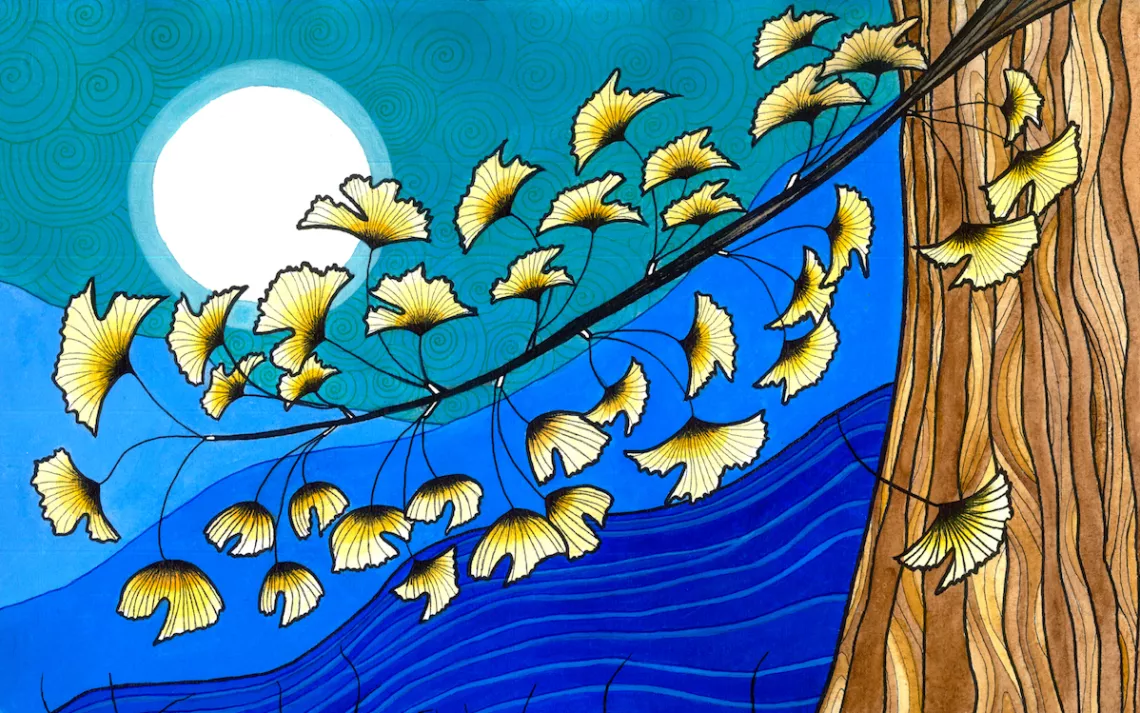Asian American Pacific Islanders in the Environmental Movement
Rhymes, refractions, and reflections
When I (aparna) was asked to write about what it means to be AAPI in the environmental movement, I hesitated at first because I felt I couldn’t really answer that question, at least not through just my own lens. The term Asian American Pacific Islander (AAPI) flattens a group of people who hail from a whole hemisphere of our planet—a hemisphere with myriad histories, languages, foods, cultures, religions, and more—into a single four-letter acronym. It’s a monochrome wash over communities who each have unique connections to land, water, wildlife, and being American.
I began speaking with colleagues with diverse identities in the AAPI constellations—women, queer folks, younger and older folks—to investigate whether I could find a through line in our collective experiences. And I discovered that, though our stories were different, they also rhymed. This piece is not so much a representative cross section of AAPI stories, but rather a set of rhymes woven together to evoke the tapestry that is our identities and environmental connections.
We rhyme like AAPI and American pie
Jack Chin is a fifth-generation Toisanese American and first-generation college graduate. Jack grew up in the 1960s in a Chinese laundry in Queens, New York. He mucked around among praying mantises, monarchs, and milkweed in a drainage ditch, the only nearby green space he had access to until weekends, when his father would take him fishing outside the city. He didn’t have what most people in the US would think of as a typical outdoor experience until his senior year of high school, when he began working on a Student Conservation Association trail crew.
Jack’s story rhymes with Agnes Vianzon’s. Agnes is a queer Filipinx, one generation apart from Jack and raised on the West Coast, with the South China Sea separating their ancestry. Agnes’s job was writing environmental impact reports, which, to her, didn’t seem environmental at all because she felt that she was justifying harmful development projects. Like Jack, Agnes found a pivotal connection to a more values-aligned version of environmentalism while working with a conservation crew, in national parks like Sequoia and Kings Canyon National Parks. Today, she is executive director of the Eastern Sierra Conservation Corps, focusing on providing transformative experiences in conservation for women, nonbinary, queer, and BIPOC folx.
Agnes’s story rhymes with Allison Chin’s. Many decades ago, also in Sequoia and Kings Canyon National Parks, queer Chinese American retired scientist and self-professed “elder” Allison spent her childhood camping with her extended family, building a passion for public lands protection that catapulted her into volunteering with the Sierra Club. “It was a love cultivated through my family and my dad, who took us camping to national parks as kids,” she said. “These became places of sanctuary, a place where every year we could have fun and just be.”
Allison’s story rhymes with Sophie Dipti Sarkar’s. At the base of the Sierra Nevada, the mountains where Allison spent her childhood and Agnes makes their livelihood, Sophie’s grandmother and her family were incarcerated in desert prison camps at Manzanar during World War II. Sophie’s ancestors include rice growers and fisher people from Fukuoka, Japan, and Kolkata, India, and fishing still runs in her bones. Sophie grew up escaping to the rolling hills of the Palouse peoples in what is now called Pullman, Washington, to process the big emotions of conflict in her home. “The hills gave me grounding in my confusion about growing up so very far away from my own people and ancestral lands in Bengal, Japan, and England,” she reflected. “They taught me how to be present for others, to not give up on my loved ones, and to bear witness to something much greater than myself.”
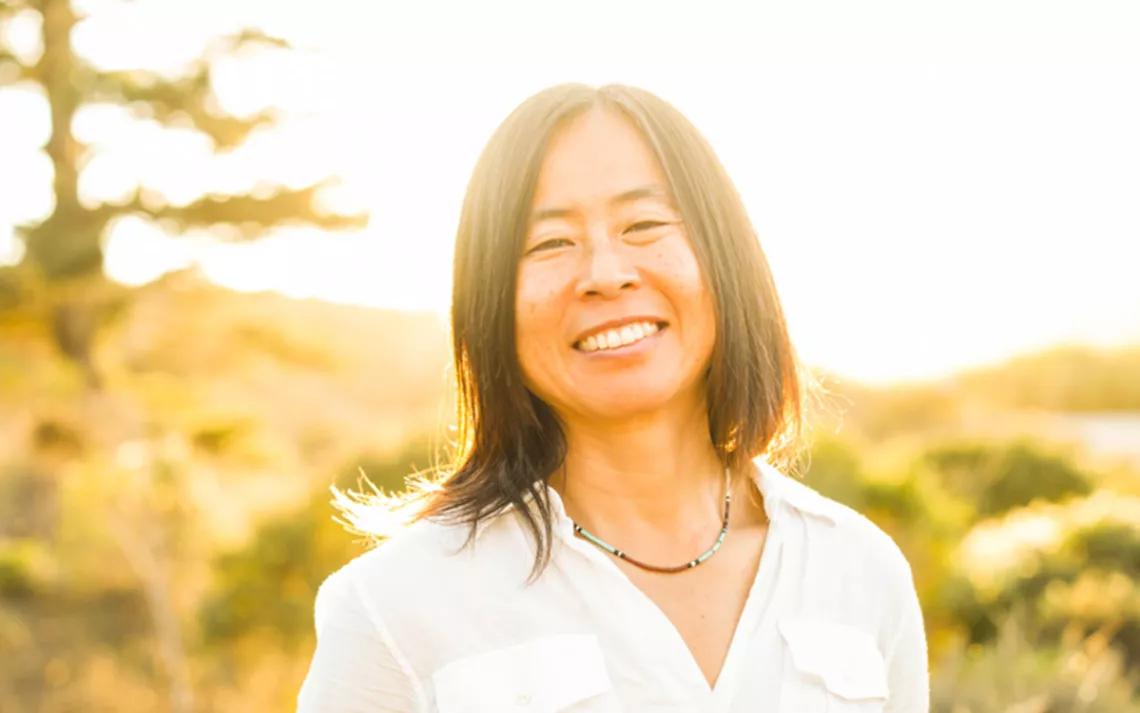
Miho Aida
Sophie’s story rhymes with Miho Aida’s. Miho’s ancestors were also rice growers in Japan. Mi means “people,” and Ho means “rice bud.” Miho’s mother built a relationship of reciprocity with the rice fields her family tended, flooding them to foster an aquatic habitat for marine life and wildlife, and harvesting the rice to feed her community. But Miho didn’t grow up in rice fields; like Jack, she grew up in a city. In the industrial areas of Tokyo, she climbed buildings, played in the polluted air, and thought that trees grew out of concrete. A film about the national parks inspired a 27-year-old Miho to leave Tokyo to live out the destiny given to her in her name, and to steward connections between people and land.
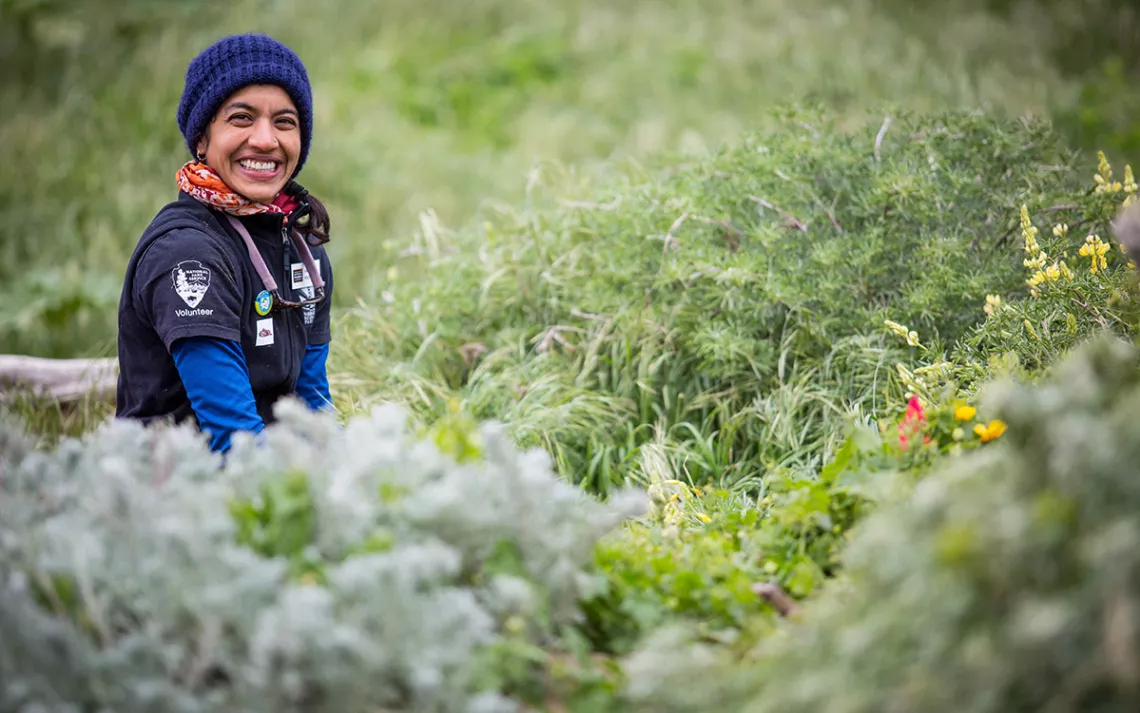
Yakuta Poonawalla
Miho’s story rhymes with Yakuta Poonawalla’s. As with Miho, it was the sight of the national parks (in this case, a flip through a Sierra Club national parks wall calendar) that inspired Yakuta to pursue working in one when she moved to the US from India (coincidentally, also at age 27). A job as a youth educator in Pune, in the western Indian state of Maharashtra, followed by a degree in communications and media studies with a focus on social issues, led her to work on Indigenous women’s rights and conservation in the mountains of North India, where she received that wall calendar. Today, she works with the Golden Gate National Parks Conservancy, connecting communities of the San Francisco Bay Area, including her own Muslim community, with parks in culturally relevant ways. “I live outside the Presidio, where I work, and it’s all I think about," she said. “And that connection is—deep doesn’t even describe it. I wake up in the morning and hear the owl, and I know where the owl is in the Presidio. It’s the kind of connection that lives in your bones and muscles.”
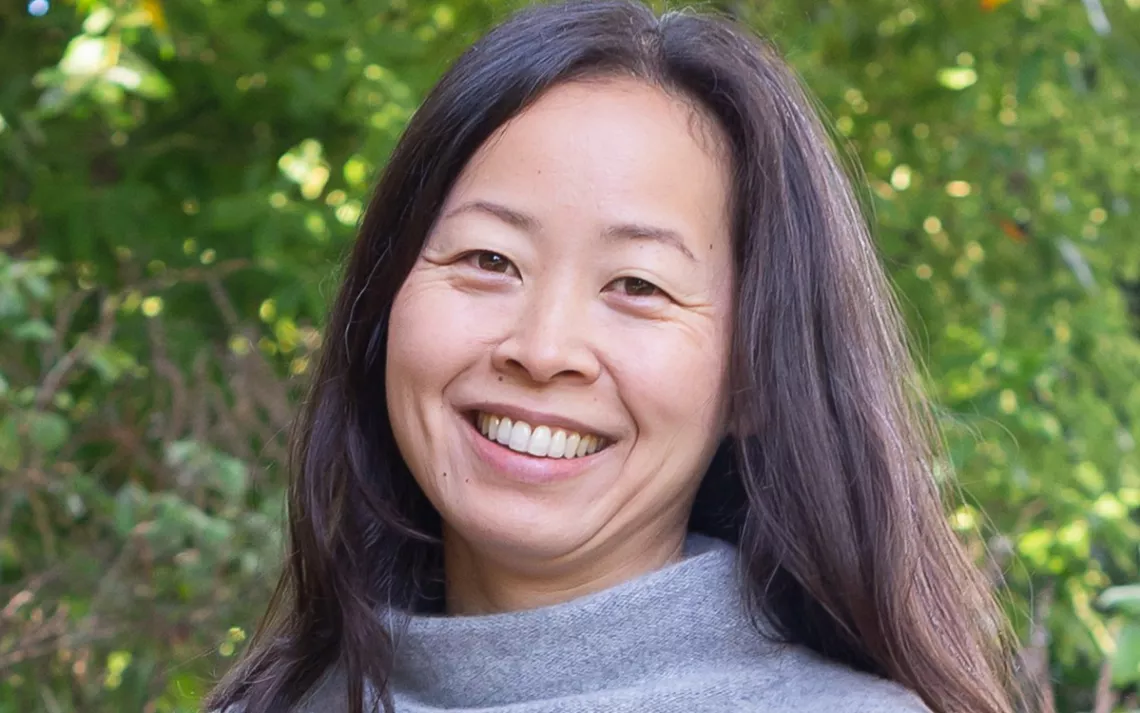
Helena Choi
Yakuta’s story rhymes with Helena Choi’s. Gender justice and reproductive rights were also her calling. As a first-generation Korean American who grew up in a high-rise building in Seoul, she still feels more at home in cities than in the wilderness. “We’re not campers,” she admitted. “I don’t have a lot of confidence outdoors. On a family hike in Marin, I was worried that every green thing with three leaves was poison oak!” Helena’s connections to environmentalism have come through her commitment to do what she can as a parent to address the climate crisis. “Climate change is the crisis of our lifetime. The biggest headlines this week are about heat waves and wildfires. This is not a place I feel good leaving for future generations.”
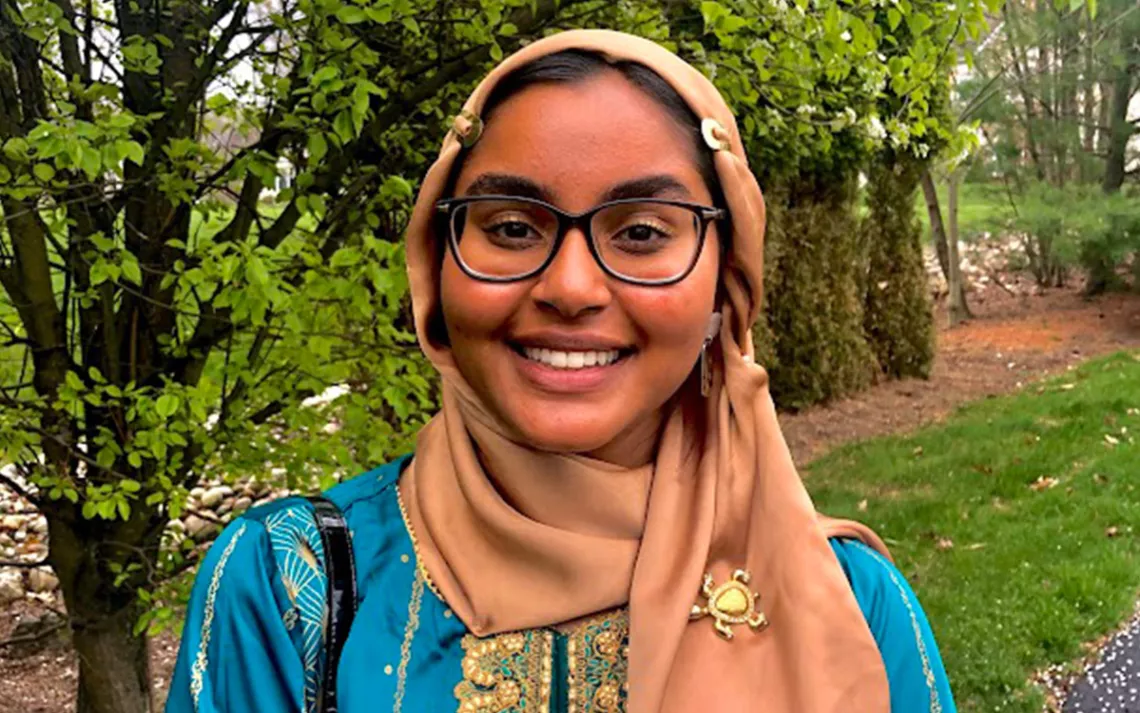
Khadijh Shaikh
Helena’s story rhymes with Khadija Shaikh’s. Like Yakuta, Khadija is an Indian Muslim, whose Ghanchi Muslim community in Gujarat has faced persecution under Hindu extremist rule. Khadija’s passion for environmentalism was not forged through some transformative outdoor experience on public lands, but by a climate rally in North Carolina, where she heard Krissy Oliver-Mays, a youth activist of color, speak about the connection between gentrification, racism, and climate change. “I’m still trying to figure out my own identity in the environmental movement,” Helena admitted. “One of our assignments was to tell our conservation story, and I don’t have a connection to conservation; social justice brought me into the environmental movement.”
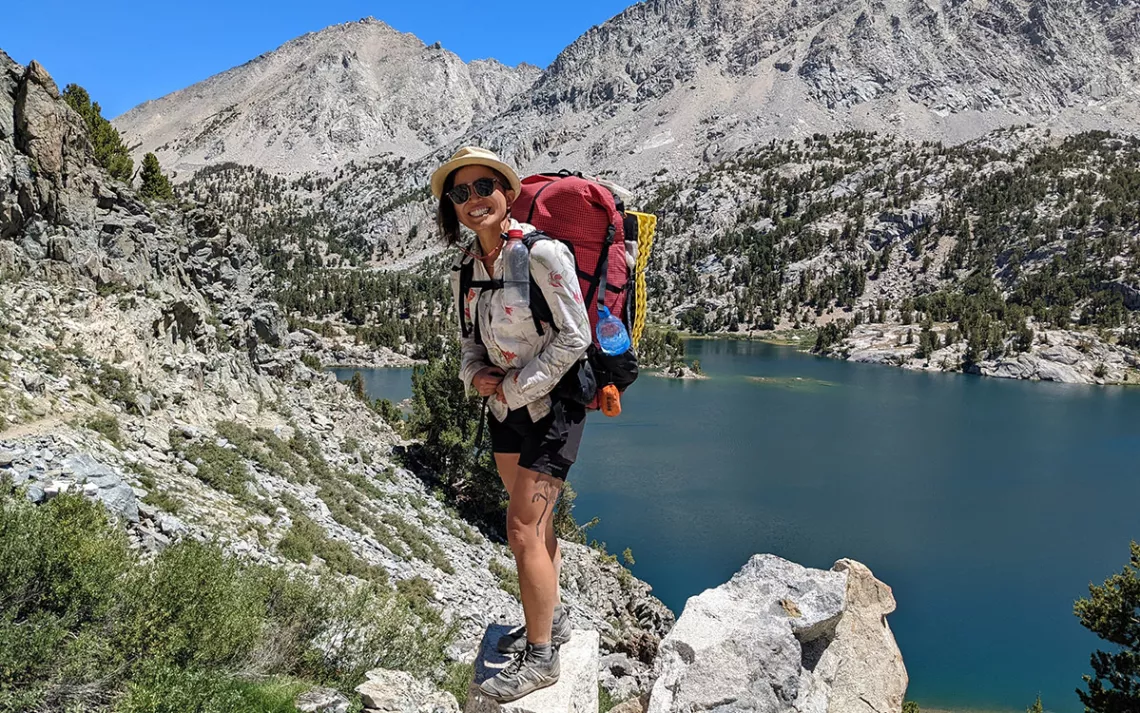
narinda heng
Khadija’s story rhymes with narinda heng’s. narinda’s community, like Khadija’s, faced persecution in their home country. As survivors of the Khmer (pronounced “Ka-mai”) Rouge genocide in Cambodia, her family gravitated to the Khmer refugee community in Southern California. “I didn’t start to be ‘outdoors,’ in the outdoor recreation sense, until I got into climbing in 2011,” narinda recalled. “A Taiwanese American woman I was dating at the time took me to Malibu Creek State Park, and that was my first climbing experience. Though narinda loves rock climbing, her love for the outdoors was also shaped during time spent at family celebrations in public parks, which were the most affordable venues for large gatherings. “Part of this is my class background, because it would never have occurred to me to book a gym for a birthday party; my family used free public park facilities for parties. I wouldn’t make my relatives pay to go into a building.”
In each of the people I interviewed, I saw a reflection of my own identities and experiences—each story, a refraction of the other, not identical but a rhyme. Like Sophie’s, my ancestral connections to land in India were along waters among fishing villages and rice fields in the Kaveri River valley. Like Jack, I spent my formative years playing in the urban jungle of Chennai with a pack of my cousins, and my nearest nature experiences were climbing mango trees and eating freshly picked coconuts. Like Agnes, Allison, and Miho, I found my passion for public lands and outdoor recreation ignited by the national parks. For me, it was time spent with extended family, a gaggle of grandmothers in tow, on summer camping trips where the grandmas would cook delicious Indian food and our parents would converse loudly in Tamil while we played in the trees under the baleful looks of white campers. Like narinda, my connections to nature today are in part through rock climbing. And like Helena and Khadija, my work lies at the intersection of social injustice and the environmental movement.
But we don’t always rhyme
I would be remiss if I didn’t note that our stories don’t always rhyme, and often diverge. Our immigration stories are vastly different. Some of our families moved to the US by choice for something better, and others were fleeing persecution. Some of our communities were impacted by colonialism in the US; many were forced into indentured labor to work on railroads, which were the vehicle that opened the door for white privileged folks to visit public lands and for the modern conservation movement to gain steam. Others immigrated here more recently simply to make a better life for themselves. The ways in which xenophobia manifests against each of our communities is very different. Sinophobia experienced by Chinese people and Islamophobia experienced by Muslim people have impacted my peers in different ways, just as the Chinese Exclusion Act of 1882 and the 2017 executive orders prohibiting immigration from Muslim countries both impacted my peers and their ancestors in different ways. There are also differences in class backgrounds, with some of our families living working-class lives and others, like myself, having had opportunities to live upper-middle-class lives.
It is these nuances that are burnished away in the outside world’s view of us as AAPI people. Yes, we are alike in so many ways. But we also need to hold the paradox that we are not.
English labels on Asian bodies
The acronym AAPI feels . . . incomplete. Jack uses it because it’s politically convenient, but also recognizes that it’s a label that in some ways is externally imposed. Agnes has always been confused by that label, and for a long time would select “Pacific Islander” on forms because the Philippines are literally islands in the Pacific, and besides, there was no box for Filipino. Though narinda initially was drawn to this pan-Asian identity, over time she sensed how people within that label experienced varying levels of belonging due to classism, colorism, and different histories of how people came to be in the US. Yakuta didn’t even know what “AAPI” meant when she moved here as an adult, and continues to identify more strongly as South Asian or Indian, but she also questions whether she even has control over how people label her. “My spiritual journey is constantly giving me the opportunity to shed all of these acronyms, but at the same time when I am in affinity spaces, there is a feeling I can’t describe. Comfort? Familiarity? Is it that feeling that makes me automatically part of this identity group? Or is it that I’m always going to be part of that group because of how I talk and walk and look?”
“AAPI” is not the only label with which we have a tenuous relationship. The term environmentalist doesn’t resonate for most of us, and in fact the environmental movement has actually harmed some of our communities. Through Jack, I learned that the modern environmental movement was born from the primarily white antiwar movement, which spun off from the civil rights movement in the 1960s as the “white flight of social movements” during deteriorating race relations. Helena reminded me of another troubling piece of history, that of environmentalists using the planet’s carrying capacity as an alarm bell to justify coercive reproductive practices that have negatively impacted marginalized communities. Former Sierra Club board president Allison has to hold the tension of identifying strongly as an environmentalist but also acknowledging its complex colonial legacy.
Environmentalist is loaded with the baggage of history and dominant paradigms. “Identifying myself as an environmentalist makes me feel that I am protecting the environment from people,” commented Miho, “which goes against my understanding that people are part of the environment and there is no separation between us.” She also finds the term environmentalist to lack feeling and compassion. When I asked her what word she would use instead, she mused: “I guess . . . I’m a caretaker of spiritual and emotional connections between people and land. We tend the land with love and care because the land provides us with what we need and we are not here without the land.”
Sophie identifies as an environmentalist but reframes the term. To her, environmentalism is a daily practice of reciprocity between us and our nonhuman kin, which includes land, water, and wildlife. It’s also about honoring our ancestors and limiting the amount of resources we use so that we can ensure future generations thrive. And finally, it is about moving collectively and not alone: “as a river, rather than individual raindrops.”
Both Yakuta and narinda believe no person should self-profess to be an “environmentalist,” in the same way nobody can call themselves an “ally,” because it is not about a label but about action. narinda has been repulsed by how immigrant and working-class frugality, like saving containers, gets conflated with environmentalism in ways that obscure her own values and upbringing. As the driver of the Golden Gate National Park’s Conservancy’s Eid in the Parks program for Muslim communities, Yakuta believes environmentalism should be about being able to bring your daily practice and beliefs into the natural world. Yakuta does not use the term environmentalist when connecting with multicultural community leaders. “Only 10 percent of my being identifies as an environmentalist; 90 percent is about bringing people together.”
I asked Yakuta what she would call herself if she didn’t have to think about how people would receive the label. “I think it would be more like an ‘earth steward,’” she said without hesitation, “That feels more all-encompassing, because we are all part of the earth and it is part of us; it is where I can bring people and nature together. It feels more humble.”
But even steward can feel imprecise. “Stewardship is about people taking care of land versus the earth having power to take care of itself and us,” commented Khadija. “I get turned off by it.” Khadija considers herself an intersectional environmentalist, not only because of her own intersecting marginalized identities, but also because of the connections between those identities and the systems she is working to dismantle to create a better world.
These English labels don’t always fit our worldviews. Our own languages have so many more nuanced ways to describe our relationships with the land than English does. And when we get stuck trying to fit a label, we stop thinking about the work. narinda wonders, as I do, When we are hyperfocused on a label rather than our values, do we let go of actually living our values?
What now?
What can readers take away from all the rhymes, refractions, and reflections? We want people to know we are here. To know we are different. To honor the diversity of identities, cultures, and connections to environmentalism we have. But also, we want people to know we are the same in many ways.
We want white folks to do their work, to learn to live in allyship and deep collaboration, to engage in self-reflection and radical humility. Humility means realizing not only that other perspectives are possible, but also that environmentalism doesn’t need to be one narrow thing and can be reimagined in ways that serve all communities.
We want people to learn about buried or untold histories of AAPI people who have both contributed to and been harmed by the American environmental movement. People like landscape artist Chiura Obata and expedition cook Tie Sing. We want to name our own AAPI role models and see their stories amplified: Inyo National Forest supervisor Lesley Yen, equity and justice advocate Angela Park, filmmaker Sal Tran, Polluters Out founder Ayisha Siddiqa, and children’s book author and climate activist Onjali Q. Raúf.
And while it’s important to recognize individuals, we also want the stories of communities whose collective efforts were instrumental to our movement to be honored as real stories of environmentalism. Stories celebrating individual achievements perpetuate the archetype of the hero’s journey that is celebrated in Western culture and reward individualism over collectivism, which is core to many Asian cultures. Chinese workers who built the Tioga Road, Laotian community members protesting at the Chevron fence line in Richmond, and Japanese farmworkers forced to hide their identities for fear of internment are largely nameless but nevertheless part of the story of advancing the environmental cause.
And we want people to continue to tell our stories long after we have shared them. Not just during AAPI Heritage Month. Not as an afterthought in the margins of some book or article on environmentalism, or just a flash in the pan in reaction to a terrible incident of anti-Asian violence. Instead, braid our stories into all US environmental narratives. Because we are and always have been part of the environmental movement, even when it has hurt us.
Contributors:
- aparna rajagopal (she/her) is an agitator and adviser at the intersection of diversity, equity, inclusion, and justice (DEIJ) and outdoor recreation, environmentalism, and conservation. She is cofounder of the Avarna Group and PGM ONE.
- Jack Chin (he/him) is cofounder of the Asian Pacific Environmental Network and a former adviser to the Youth Access to Nature Fund at the San Francisco Foundation and Sierra Club Inspiring Connections Outdoors.
- Agnes Vianzon (they/them) is executive director of the Eastern Sierra Conservation Corps.
- Allison Chin (she/her) is former board president and current board member of the Sierra Club.
- Sophie Sarkar (she/her) is cofounder of PGM ONE, one of the largest racial affinity spaces in the environmental movement, and Interwoven, a Black and Asian solidarity series and zine.
- Miho Aida (she/her) is an environmental educator and director of equity and inclusion at NatureBridge.
- Yakuta Poonawala (she/her) is the associate director of community stewardship and engagement programs at the Golden Gate National Parks Conservancy.
- Helena Choi (she/her) is a vice president of Resources Legacy Fund.
- Khadija Shaikh (she/her) is a Yale Conservation Scholar and third-year student at the University of Connecticut majoring in environmental studies with minors in both social justice organizing and Asian American studies.
- narinda heng (she/her) is an outdoor educator, artist, poet, and writer.
Rhymes of AAPI alienation
We’re pigeonholed.
“Are you an engineer?”
We’re interchangeable.
“Hi [other Asian person who looks nothing like me]!”
Our individuality is melted into the monochrome hue of AAPI-ness.
We’re tokenized.
“Can you pose for our website photo?”
“Can you tell me how Indian people connect to nature?”
“Can you serve on the diversity committee?”
We’re stereotyped.
“Why do your people litter all the time? Don’t they care about the environment?”
We’re told to speak English. Or we’re told we’re “so articulate,” even if we were born and raised here.
Thank you?
We’re exoticized.
“How did you get here?”
“Where are you really from?”
Which doesn’t come off as genuine interest, but rather as bizarre anthropological fascination.
The desperate need to put us in a box (Indian? Pakistani? Guyanian?) overshadows all notions of real connection.
We’re lectured to about park rules.
“Stay quiet!”
“Respect other visitors!”
Even in the middle of the day while other visitors have music blasting from their trucks.
We’re racially profiled by camp hosts.
“One man’s art is another man’s graffiti!” scolds the camp host with a “tut tut” finger waggle to my son making chalk drawings of spiders and butterflies; the leers of white campers burning holes into our brown bodies as we’re just trying to build community.
We feel like imposters in the environmental movement.
“Do I belong here?”
“Am I outdoorsy enough to be here?”
“Do I deserve to be a leader?”
Yes, we too are colonizers on Indigenous homelands. But we have been colonized in our own homelands. So when we feel invisible, we tell ourselves that “maybe we deserve it.”
We code switch: Change our accents, our appearance.
Ashamed of how our houses smell. Of how our bodies smell. Of our parents’ accents.
We shrink. Become more charming, approachable, disarming.
Shape-shifting and contorting ourselves to fit in. And then feeling a loss of our identity.
Am I me? Or am I the version of me I invented when I was a young immigrant trying to belong?
We expend our (unpaid) emotional energy educating people with dominant identities about our lived experiences.
“Can you tell me why that was offensive?”
Because being in this movement we care so deeply about and being seen as human sometimes feel more like an “either/or” than a “yes/and.”
Can we not have both?
 The Magazine of The Sierra Club
The Magazine of The Sierra Club
